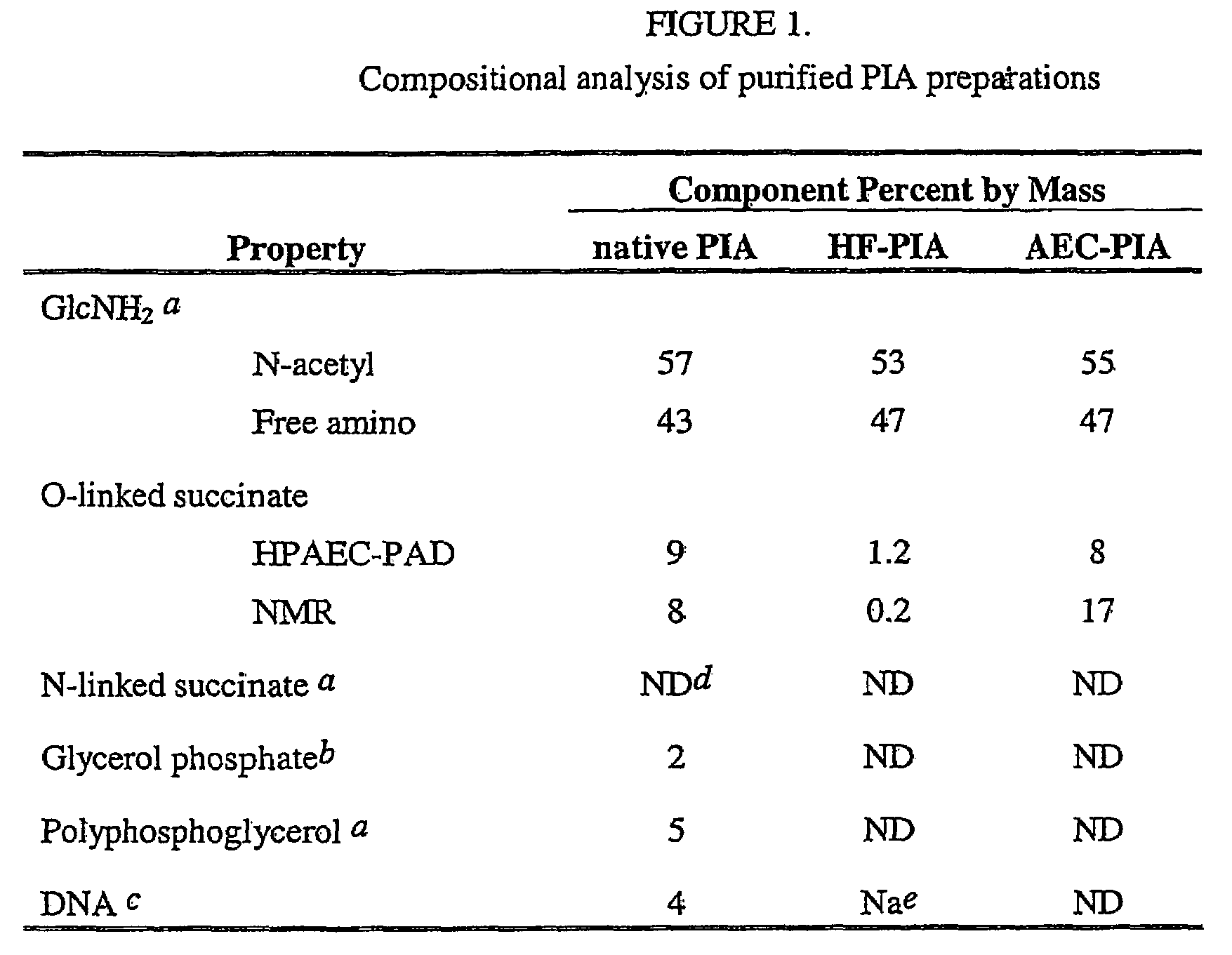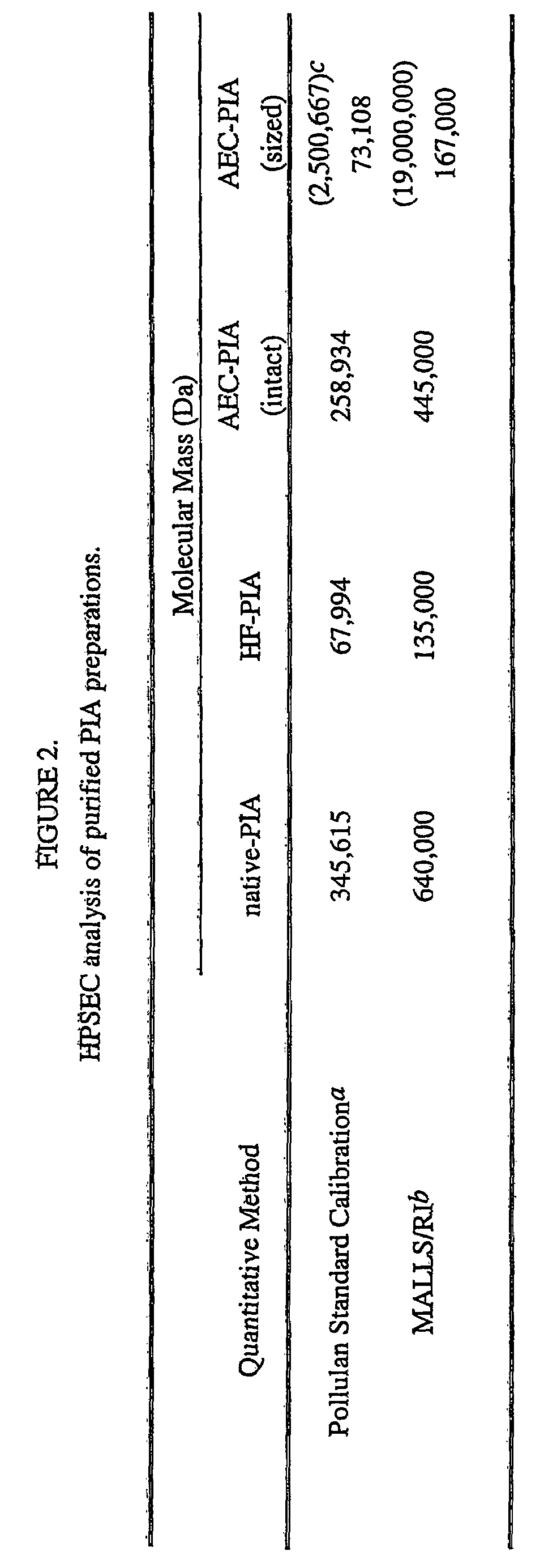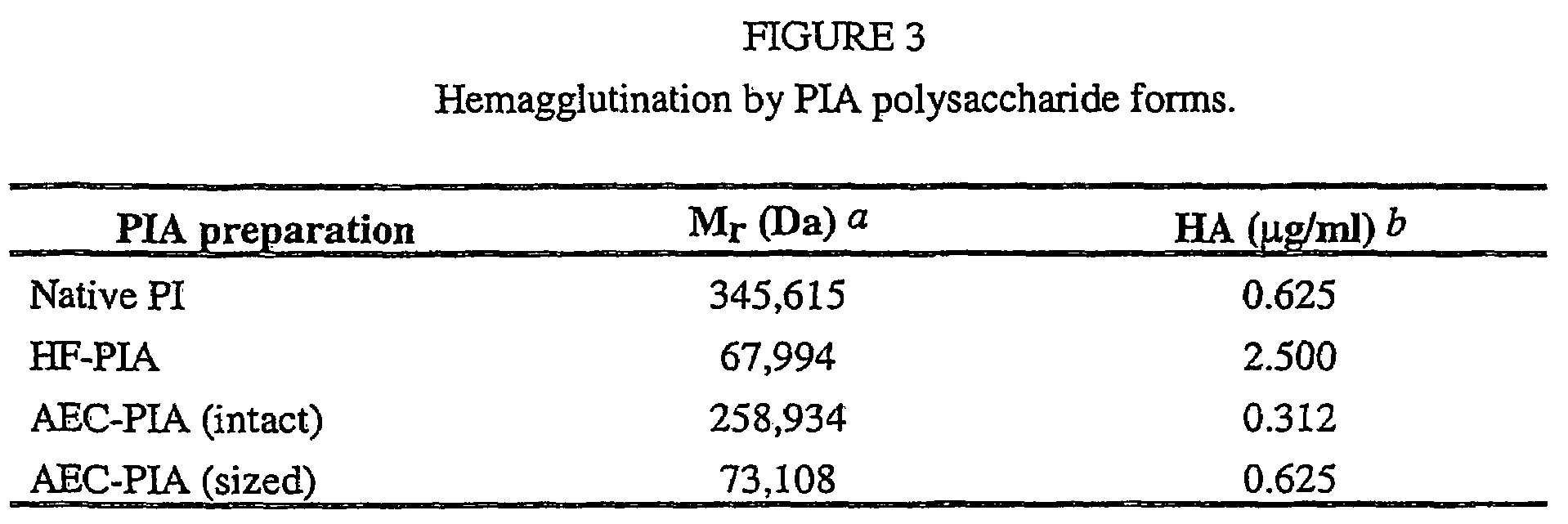Staphylococcus aureus exopolysaccharide and process
- Summary
- Abstract
- Description
- Claims
- Application Information
AI Technical Summary
Benefits of technology
Problems solved by technology
Method used
Image
Examples
example 1
Fermentation of S. aureus Strain MN8m and Culture Inactivation
[0075]Culture broth was prepared by dissolving 300 g soy peptone, 75 g NaCl, and 37.5 g potassium phosphate dibasic in 4 L pyrogen free water (PFW). 1.5 L of dissolved Yeast Extract, ultrafiltrate grade (YEU) was added to the mixture and the volume was adjusted to 14.4 L with PFW (YEU final concentration of 31.5 gm / L). UCON LB625 antifoam (7.5 ml) was added and the medium was supplemented with 1 g / L succinic acid and 1 g / L sodium succinate. Broth was sterilized at 123° C. for 30 min after which sterile dextrose was added to a final concentration of 1%. Tryptic Soy Agar plates streaked with 0.1-mL of S. aureus MN8m (obtained from Brigham & Womens Hospital) stock were incubated overnight at 37° C. Seed medium (20 gm / L soy peptone, 5.8 gm / L NaCl, 2.9 gm / L K2HPO4, 0.46 gm / L NaHCO3, and HEPES buffer (55.5 gm / L), pH 7.0, containing 1% sterile dextrose and 31.5 gm / L filter sterilized YEU) (45 ml) was inoculated with a single col...
example 2
Purification of SAE Antigen
[0076]Conditioned supernatant (11.2 L) was clarified by filtration using Suporcap-100 0.8 / 0.2 micron cartridges (Pall Gelman, Ann Arbor, Miss.) and then concentrated by tangential flow filtration (TFF) using a 500K molecular weight cutoff (MWCO) hollow-fiber membrane cartridge (AIG Technologies, Needham, Mass.) to a volume of 700 mL. Following concentration, the retentate fraction was diafiltered against. 8 volumes of distilled deionized (DI) water. The retentate was adjusted to 5 mM Tris-HCl, pH 8, 2 mM CaCl2, and 2 mM MgCl2. Proteinase K (14 mg) was added and the mixture was allowed to incubate for 16 hours at 20° C. The digestion reaction was adjusted to 2M NaCl and concentrated to 700 mL by TFF as previously described. The retentate was successively diafiltered against 8 volumes of 2M NaCl, 8 volumes of Low pH Buffer (25 mM sodium phosphate, pH 2.5, 0.1M NaCl), and 10 volumes of DI water, after which it was concentrated to a final volume of 340 mL. The...
example 3
Polishing and Sizing of Native SAE
[0077]Native SAE (1 g) was dissolved at 2 mg / ml in 10 mM HEPPS, 0.4 M NaCl, pH 7.7 buffer by stirring overnight at ambient temperature. Residual insolubles were removed by centrifugation at 13,000×g for 30 min at 20° C. The supernatant fraction was applied to a 0.9 L column (11.3 cm id×9 cm) of Fractogel EMD TMAE(M) resin (E.M. Sciences, Gibbstown, N.J.) equilibrated in 10 mM HEPPS, 0.4 M NaCl pH 7.7 buffer at 40 ml / min. The column was washed with 3 volumes of equilibration buffer and eluted with 10 mM HEPPS, 2 M NaCl, pH 7.8 buffer. Fractions of 100 ml were collected and scanned over the wavelength range 340 to 240 nm. Flow-through fractions which showed no absorbance maximum at 260 nm were pooled and diafiltered against 18 volumes of DI water at ambient temperature using a BIOMAX 50 K MWCO membrane (Millipore, Bedford, Mass.). Size reduction was effected using a cup and horn sonication apparatus (Misonix, Farmingdale, N.Y.) employing a power outpu...
PUM
| Property | Measurement | Unit |
|---|---|---|
| Fraction | aaaaa | aaaaa |
| Fraction | aaaaa | aaaaa |
| Fraction | aaaaa | aaaaa |
Abstract
Description
Claims
Application Information
 Login to View More
Login to View More - R&D
- Intellectual Property
- Life Sciences
- Materials
- Tech Scout
- Unparalleled Data Quality
- Higher Quality Content
- 60% Fewer Hallucinations
Browse by: Latest US Patents, China's latest patents, Technical Efficacy Thesaurus, Application Domain, Technology Topic, Popular Technical Reports.
© 2025 PatSnap. All rights reserved.Legal|Privacy policy|Modern Slavery Act Transparency Statement|Sitemap|About US| Contact US: help@patsnap.com



